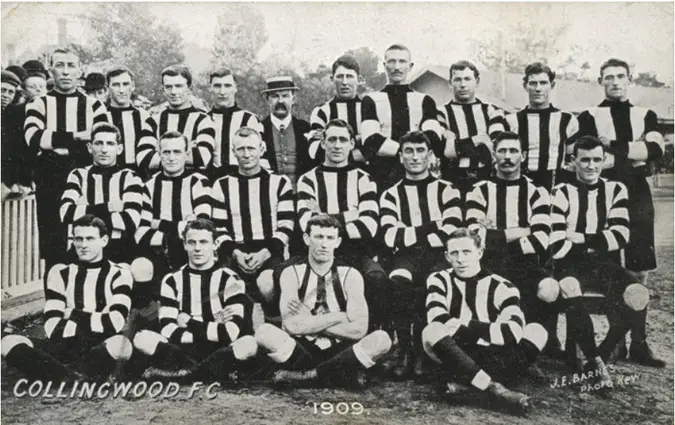Australian Rules Football: Exciting Sport Not for the Faint-Hearted
Australian Rules football, known as “Aussie rules” or “footy,” has a rich history dating back to the 1800s. This unique and highly physical sport is vastly different from the NFL but holds a special place in Australia’s sporting culture. Its origins are a mix of various sports, with inspiration drawn from an Aboriginal game called marngrook and Gaelic football from Ireland.
The sport’s foundation is rooted in football played in English private schools. When transported to the open parklands of Melbourne, it took on a distinct form. In England, different schools had different rules for football, leading to confusion when teams from various schools faced off.
In 1848, at Cambridge University, a common set of rules was established, drawing from prestigious schools like Harrow, Eton, Rugby, Winchester, and Shrewsbury. Colonial Melbourne faced similar challenges, requiring formal rules for the sport.
Aussie Rules Football Essentials
Aussie rules football is played on an oval field that is much larger than an NFL field. Players can run upwards of 13 miles per game. Each team consists of 18 players who must move the ball by hand pass, kick, or dribble. The ball used is rounder and larger than an American football.
The field has four goalposts at each end: two tall goalposts in the center (worth six points if the ball is kicked through them) and two shorter behind posts on either side (worth one point if the ball goes between them). The game is divided into four quarters, each lasting approximately 20 minutes of playing time. The clock only stops for significant delays or injuries, creating a free-flowing and fast-paced sport.
Scoring is unique, with different points awarded for goals based on which goalposts are hit. When a player from the attacking team kicks the ball through the goalposts, they score 6 points, and that’s called a goal. If the ball crosses the behind line or goes over the goal line but doesn’t meet all the goal conditions (like hitting a goalpost), they get 1 point, and it’s called a “behind.”
The AFL season typically runs from March to September, with 18 teams competing in a regular season, followed by finals (playoffs) to determine the premier. The top eight teams from the regular season compete in the knockout finals series to determine the overall winner of the AFL premiership.
The Grueling Nature of the Game
What makes the AFL even more intense is the absence of protective gear or padding. This sport is not for the faint of heart. Players are allowed to tackle, kick, and use various means to prevent the opposing team from scoring.
As a result, the sport often leads to injuries, including broken bones and, in some cases, even knocked-out teeth. Despite the physical challenges, the adrenaline and unique gameplay of Aussie rules football continue to attract both players and fans alike.
Common injuries that occur within the AFL include hamstring strains, groin injuries, ankle sprains, ankle sprains, ACL tears, MCL sprains, concussions, collarbone fractures, hip pointers, and facial fractures.
An American Australian rules footballer named Mason Cox who suffered torn retinas during a game was quoted as saying “There’s no rules, so you can do whatever you want.” While this may not be technically accurate since the league has taken steps to minimize the risk of injuries to players, the sport does involve a lot of intense physical contact and seems to lack the use of extensive protective gear.
While players in AFL wear mouthguards and occasionally soft headgear, they do not use helmets or the same level of padded equipment as NFL players. Like many contact sports, AFL has faced increasing scrutiny regarding the risk of concussions. However, the league has implemented strict concussion protocols to address and manage head injuries.
The AFL is beginning to place a strong emphasis on player welfare, and there is ongoing research and development to improve player safety. This includes medical assessments, injury. AFL teams also have access to medical professionals who play a crucial role in assessing and managing injuries.
Photo By: Flickerd, CC BY-SA 4.0 via Wikimedia Commons
The AFL Season and Grand Final
Australian Rules Football is considered the most popular and widely followed sport in the country. The AFL season captivates millions of Australians, and the Grand Final is one of the most-watched sporting events in the nation.
AFL has a strong community focus, with many Australians participating in local and amateur leagues. This grassroots engagement helps foster a sense of connection to the sport. The AFL is the highest level of competition for AFL. The league consists of 18 teams representing various cities and regions across Australia, making it a truly national competition.
The AFL receives extensive media coverage across television, radio, and digital platforms. Major matches, especially the Grand Final, attract large television audiences. This Grand Final is a major highlight of the sporting calendar in Australia, held at the Melbourne Cricket Ground very year which can draw an attendance of over 100,000 fans.
Typically, the attendance at the AFL Grand Final is close to or completely at full capacity, making it one of the most well-attended sporting events in Australia. The demand for tickets is high, and fans from across the country travel to Melbourne to witness the big game.
Many Australians gather with family and friends to watch the Grand Final together. This often involves barbecues, picnics, or parties at home. Countless fans also partake in AFL betting which only adds yet another extra layer of excitement for many fans watching the Grand Final.
Betting agencies offer a range of traditional markets for the Grand Final, including match-winner, margin of victory, and player-specific bets. Punters can place bets on the outcome of the game, the halftime score, and other related events. You can also bet on the performance of individual players, such as the player who you believe will kick the most goals, be awarded the Norm Smith Medal winner (given to the MVP in the Grand Final), or the player with the most disposals.
The AFL has embraced innovation, introducing rule changes and initiatives to keep the game dynamic and appealing to both traditional fans and new audiences. The popularity of AFL extends beyond the regular season, with events like the AFL Women’s competition gaining traction and fostering increased interest in the sport among women and girls.
Unique Challenges
Unlike other ball sports with strict rules and video replays, the interpretation of events in AFL often relies on the umpires’ judgment. This means that ‘holding the ball,’ ‘incorrect disposal,’ or a ‘dangerous tackle’ can be perceived differently by different interpretations.
It’s a dynamic aspect of the game that keeps players and fans on their toes. The dynamic nature of Aussie Rules Football requires split-second decisions from umpires. While there are rules in place, the interpretation of these rules can vary from one decision to another.
While it may seem challenging, the adaptability of umpires adds to the unpredictable nature of Aussie Rules Football and ensures that the game remains exciting and dynamic.
As popular as the AFL is in Australia, it does still need to compete for attention and resources with other popular sports including rugby, soccer, and cricket. The AFL has undertaken initiatives to expand the reach of the sport, including introducing teams in non-traditional markets like Queensland and New South Wales.
However, expanding into new regions presents challenges in terms of competition with other established sports and building a strong local fan base. Recently, it was announced the island state of Tasmania will get its first ever AFL team when the 2028 season starts.
Running a professional sports league, especially one with significant travel costs due to the vast size of Australia, requires financial sustainability. Balancing the financial needs of clubs, maintaining competitive balance, and managing costs is an ongoing challenge for the AFL.
Australia’s changing demographics, including population shifts to urban areas and increased cultural diversity, may impact the traditional fan base of the AFL. The league needs to adapt to these changes and appeal to a broad cross-section of the population.
Despite these challenges, the AFL has demonstrated resilience and adaptability over the years. The league continues to evolve and implement strategies to address these challenges and ensure the ongoing success and popularity of Australian Rules Football in Australia. The AFL only adds to the intrigue of Australia which has long attracted travelers who come to witness the country’s unusual wildlife and endless natural wonders.


























